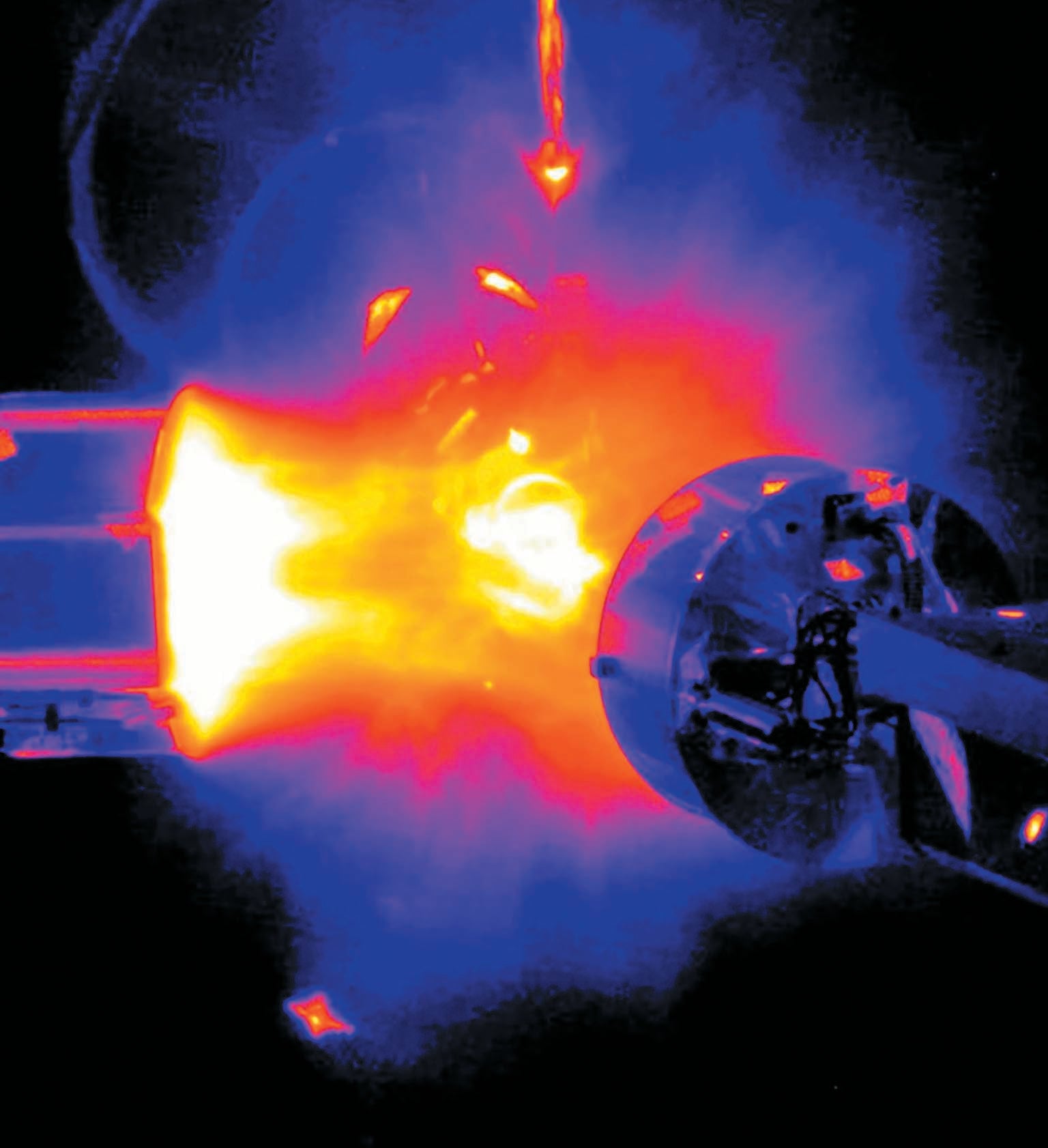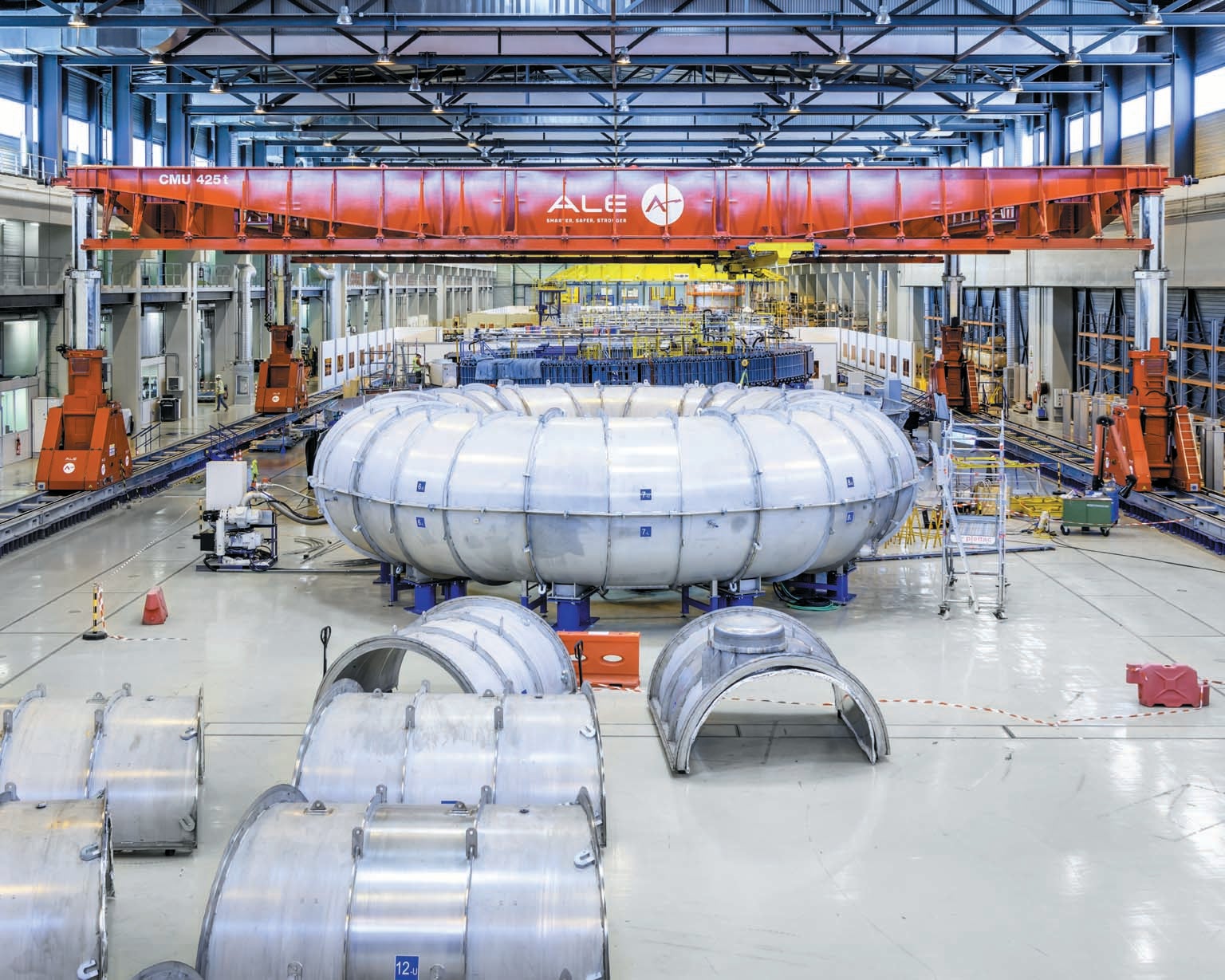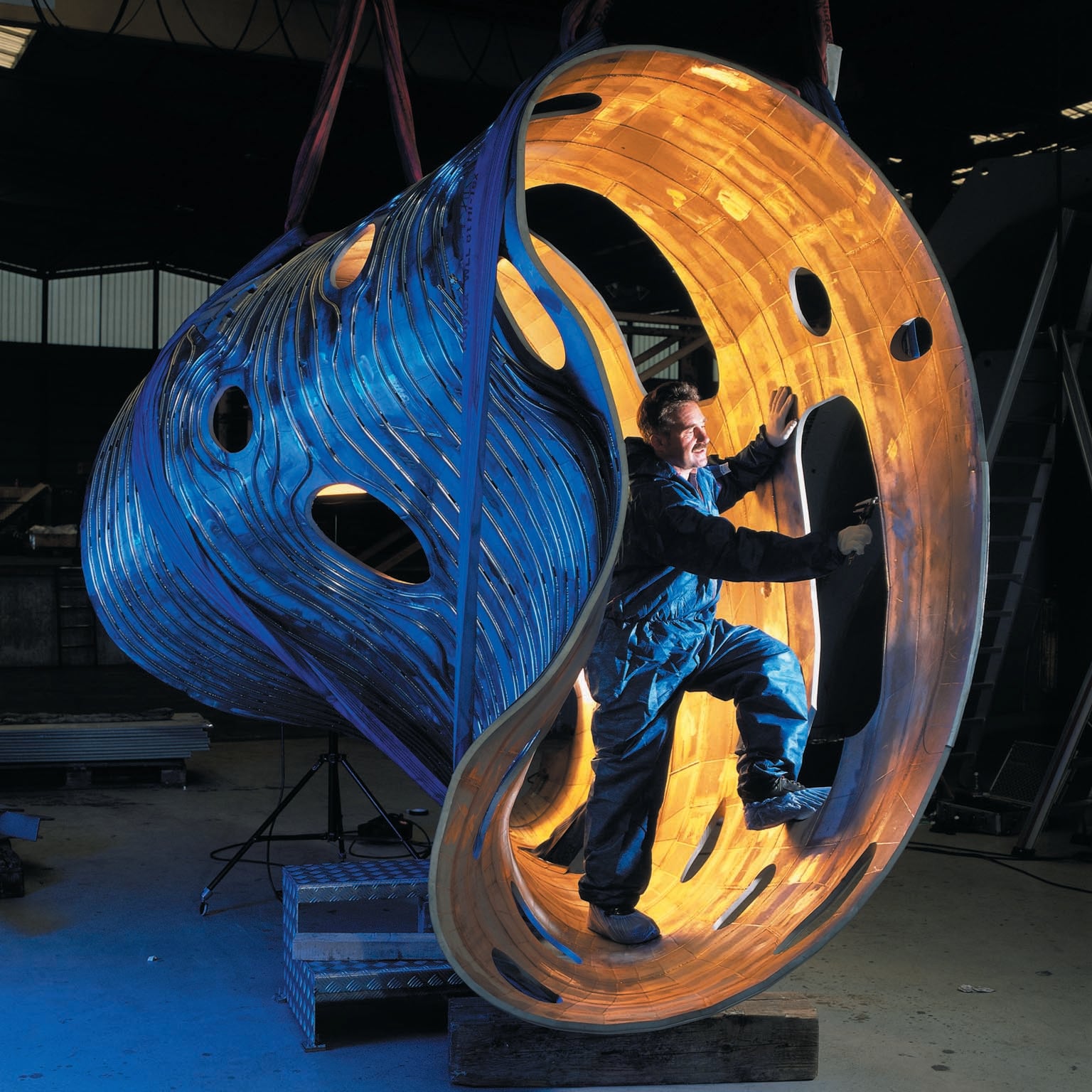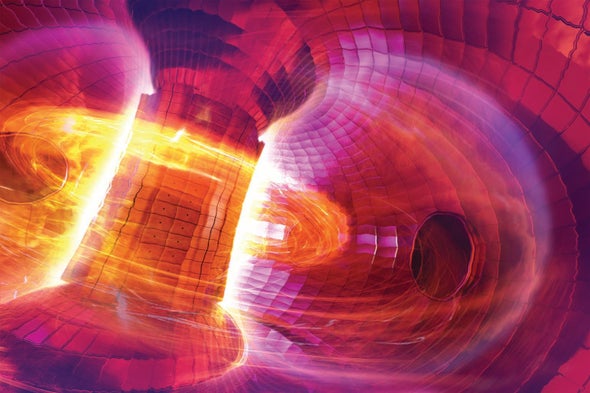Last December physicists working on fusion claimed a breakthrough. A team at the National Ignition Facility (NIF) in California announced it had extracted more energy from a controlled nuclear fusion reaction than had been used to trigger it. It was a global first and a significant step for physics—but very far from enabling practical exploitation of fusion as an energy source. The high-profile announcement elicited a familiar pattern of responses to fusion research: acclaim from boosters of the technology and dismissals from skeptics, who complain that scientists continually promise that fusion is just 20 years away (or 30 or 50, take your pick).
These fervent reactions reflect the high stakes for fusion. The world is increasingly desperate for an abundant source of clean energy that can mitigate the climate crisis created by burning fossil fuels. Nuclear fusion—the merging of light atomic nuclei—has the potential to produce energy with near-zero carbon emissions, without creating the dangerous radioactive waste associated with today's nuclear fission reactors, which split the very heavy nuclei of radioactive elements. Physicists have been studying fusion power since the 1950s, but turning it into a practical energy source has remained frustratingly elusive. Will it ever be a significant source of power for our energy-hungry planet—and if so, will it arrive in time to save Earth from meltdown?
The latter question is one of the few in this field to which there is a clear answer. Most experts agree that we're unlikely to be able to generate large-scale energy from nuclear fusion before around 2050 (the cautious might add on another decade). Given that the global temperature rise over the current century may be largely determined by what we do—or fail to do—about carbon emissions before then, fusion can be no savior. (Observatory columnist Naomi Oreskes also makes this point here.) “I do think fusion looks a lot more plausible now than it did 10 years ago as a future energy source,” says Omar Hurricane, a program leader at Lawrence Livermore National Laboratory, where the NIF is housed. “But it's not going to be viable in the next 10 to 20 years, so we need other solutions.”
Decarbonizing by mid-century will therefore depend on other technologies: renewables such as solar and wind; nuclear fission; and perhaps carbon-capture techniques. As we look further out, though, there are good reasons to think fusion will be a key part of the energy economy in the second half of the century, when more developing countries will start requiring Western-size energy budgets. And solving the problem of climate change is not a one-time affair. If we can navigate the bottleneck of the next few decades without transforming the climate too radically, the road beyond may be smoother.
The Long Haul
Nuclear fusion was recognized as a potential source of energy almost as soon as fission was. In a debriefing meeting of the Manhattan Project in late 1945, Italian physicist Enrico Fermi, who led the project to build the first fission reactor in Chicago during World War II, envisioned fusion reactors for power generation. Scientists figured out how to release fusion energy a few years later but only in the uncontrolled Armageddon-like explosions of hydrogen bombs. Once we learned how to conduct the process in a controlled and sustained manner, some scientists predicted, electricity would become “too cheap to meter.”

But the challenges proved much greater than expected. “It's superhard,” Hurricane says. “We're basically making stars on Earth.” The fusion of two hydrogen atoms to make helium is the main process that powers the sun and other stars. When such light atomic nuclei combine, they release an immense amount of energy. But because these nuclei have positive electrical charges, they repel one another, and it takes tremendous pressures and temperatures to overcome that electrostatic barrier and get them to merge. If scientists can contain the fuel for fusion—a plasma mixture of deuterium and tritium, two heavy isotopes of hydrogen—the energy released in the reaction can make it self-sustaining. But how do you bottle a plasma at a temperature of around 100 million kelvins, several times hotter than the center of the sun?

No known material can withstand such extreme conditions; they would melt even extremely heat-resistant metals such as tungsten in an instant. The answer long favored for reactor design is magnetic confinement: holding the electrically charged plasma in a “magnetic bottle” formed by strong magnetic fields so it never touches the walls of the fusion chamber. The most popular design, called a tokamak and proposed in the 1950s by Soviet scientists, uses a toroidal (or doughnut-shaped) container.

The process requires exquisite control. The furiously hot plasma won't stay still: it tends to develop large temperature gradients, which generate strong convection currents that make the plasma turbulent and hard to manage. Such instabilities, akin to miniature solar flares, can bring the plasma into contact with the walls, damaging them. Other plasma instabilities can produce beams of high-energy electrons that bore holes in the reaction-chamber cladding. Suppressing or managing these fluctuations has been one of the key challenges for tokamak designers. “The big success of the past 10 years has been in understanding this turbulence in quantitative detail,” says Steven Cowley, who directs the Princeton Plasma Physics Laboratory.
One of the biggest obstacles to magnetic-confinement fusion is the need for materials that can withstand the tough treatment they'll receive from the fusing plasma. In particular, deuterium-tritium fusion makes an intense flux of high-energy neutrons, which collide with the nuclei of atoms in the metal walls and cladding, causing tiny spots of melting. The metal then recrystallizes but is weakened, with atoms shifted from their initial positions. In the cladding of a typical fusion reactor, each atom might be displaced about 100 times over the reactor's lifetime.

The consequences of such intense neutron bombardment aren't well understood, because fusion has never been sustained for the long periods that would be required in a working reactor. “We don't know and won't know about materials degradation and lifetime until we've operated a power plant,” says Ian Chapman, CEO of the U.K. Atomic Energy Authority (UKAEA), the British government's nuclear energy organization. Nevertheless, important insights into these degradation problems might be gleaned from a simple experiment that generates intense neutron beams that can be used to test materials. Such a facility—a particle-accelerator-based project called the International Fusion Materials Irradiation Facility–Demo Oriented Neutron Source—should begin operating in Granada, Spain, in the early 2030s. A similar U.S. facility called the Fusion Prototypic Neutron Source has been proposed but doesn't yet have approval.
There is still no guarantee that these material issues can be solved. If they prove insurmountable, one alternative is to make the reactor walls from liquid metal, which can't be damaged by melting and recrystallization. But that, Cowley says, brings in a whole suite of other technical concerns.
Another major challenge is making the fusion fuel. The world has abundant deuterium: this isotope constitutes 0.016 percent of natural hydrogen, so the seas are literally awash in it. But tritium forms only in small quantities naturally, and it decays radioactively with a half-life of just 12 years, so it's constantly disappearing and must be produced afresh. In principle, it can be “bred” from fusion reactions because the fusion neutrons will react with lithium to make it. Most reactor designs incorporate this breeding process by surrounding the reactor chamber with a blanket of lithium. All the same, the technology is unproven at large scales, and no one really knows whether or how well tritium production and extraction will work.
Gargantuan Machines
The largest fusion project in the world, ITER (Latin for “the way” and originally an acronym for “International Thermonuclear Experimental Reactor”) in southern France, will use a massive tokamak with a plasma radius of 6.2 meters; the entire machine will weigh 23,000 metric tons. If all goes to plan, ITER—supported by the European Union, the U.K., China, India, Japan, South Korea, Russia and the U.S.—will be the first fusion reactor to demonstrate continuous energy output at the scale of a power plant (about 500 megawatts, or MW). Construction began in 2007. The initial hope was that plasmas would be produced in the fusion chamber by about 2020, but ITER has suffered repeated delays while the estimated cost of $5.45 billion has quadrupled. This past January the project's leaders announced a further setback: the intended start of operation in 2035 may be delayed to the 2040s. ITER will not produce commercial power—as its name says, it is strictly an experimental machine intended to resolve engineering problems and prepare the way for viable power plants.
This new holdup of what some regard as a cumbersome behemoth with no guarantee of success prompted another bout of fusion skepticism. But such problems are to be expected, Hurricane says. “ITER is getting beaten up a lot, but we need to give them a break and let them sort out the problems,” he says.
Chapman agrees. “It was very predictable that there would be problems, both politically and technically,” he says. “The project is doing amazing things, including establishing supply chains that didn't exist before.” The delay is disappointing, he admits, “but I don't think we'll look back on ITER and think it was a mistake. We'll think it was really important in the genesis of fusion. I'm convinced it will work.”
Tokamaks for power plants will probably not need to be as gargantuan, and certainly cannot be as expensive, as ITER. Lately there has been increasing interest in smaller devices with a more spherical shape, like a cored apple. One of these, called the Spherical Tokamak for Energy Production (STEP), is being planned by the UKAEA as a pilot plant to be developed in parallel with ITER.

The spherical design concept had a successful proof-of-principle run with a device called the Mega Ampere Spherical Tokamak (MAST), which operated from 1999 to 2013, overseen by UKAEA and the European Atomic Energy Community (Euratom). These smaller machines have a higher energy density and thus a greater risk of heat damage, especially from the extraction of hot spent fuel in the “exhaust” system. An improved version—MAST Upgrade—turned on in 2020 and has been able to extract heat about 20 times more efficiently than the original. “That really does open the path to conceiving of a compact power plant,” Chapman says.
Enter STEP, which aims to be just that: a prototype plant that produces net electricity. It is still in the concept design phase, but already the U.K. government has moved to create bespoke regulation for the project—the first in the world for fusion—that eliminates the need for a conventional nuclear license. Leaders selected a site last October: a coal power station in northern England that ceased operating in March and is scheduled to be demolished in early 2024. The site already has a cooling water supply and connections to the national grid and railway system.

The E.U. is planning its own prototype plant, called the DEMOnstration Power Plant (DEMO), administered by the EUROfusion consortium. The project was originally intended as a 500-MW plant, but last year technical uncertainties arising from the ITER delays led the consortium to scale back the goal to around 200 MW. Construction might begin in the early 2040s, says Tony Donné, EUROfusion's program manager. “I'm convinced we can build such a device in 10 years.”
Donné adds that there are equivalent “stepping stone” projects toward fusion plants in South Korea, Japan and China; the U.S. made plans for a smaller device called the Fusion Nuclear Science Facility. “China has come to the party a bit late but is now investing heavily and growing its workforce rapidly,” Chapman says. “It is definitely catching up with what already exists in Europe and the U.S.” Donné believes that some friendly competition—a kind of “moon race” for the first prototype fusion plant—could be beneficial as long as countries continue to share information.
The Start-up Scene
It's not all about big national and international projects. Small spherical tokamaks are one of the technologies that have brought fusion within the reach of private companies. Several dozen fusion start-ups have sprung up around the world, such as Commonwealth Fusion Systems (CFS) in Massachusetts, General Fusion in Canada, and Tokamak Energy in the U.K.
General Fusion, with support from the UKAEA, has just begun building a demonstration plant that it hopes (ambitiously) to have running by 2025. According to the company's former CEO Christofer Mowry, it will be “the first power-plant-relevant large-scale demonstration.” Meanwhile CFS, in partnership with the Plasma Science and Fusion Center (PSFC) of the Massachusetts Institute of Technology and others, is building a prototype device called SPARC, also targeted for completion in 2025. SPARC will be a midsize tokamak in which the plasma is tightly confined by very intense magnetic fields produced by new high-temperature superconducting magnets developed at M.I.T. and unveiled in 2021. Such magnets were hailed as a significant step for magnetic-confinement fusion because the power density in the plasma increases rapidly as the strength of the magnetic field rises.
The SPARC team aims to extract net energy from the plasma (about 10 times more energy out than in) and to generate 50 to 140 MW of fusion power. Although SPARC is much smaller than ITER, the PSFC's director, Dennis Whyte, says its mission is similar: to solve the science and technology problems that stand in the way of commercialization. It won't feed any energy into the grid, but it's meant to clear a path for the “affordable, robust, compact” fusion reactor concept developed at M.I.T. and pursued by CFS, which Cowley considers “the most impactful company” so far.
Cowley welcomes such projects but cautions against seeing them as a shortcut to making fusion a realistic energy source. “We see these start-up companies coming in with a lot of enthusiasm, and a lot of their focus is on a particular part of the problem,” he says. It's highly unlikely that one of them will make fusion energy commercial before the big guns, and many will simply fold—as some start-ups always do. But Chapman believes others will become valuable suppliers of expertise and of specialized components such as magnets. “Most of the small fusion companies will end up being part of the supply chain,” he says.
Different Designs
Setups for magnetic-confinement fusion are not necessarily limited to tokamaks. In the 1950s astrophysicist Lyman Spitzer argued that plasma might be contained more effectively in a doughnut chamber with a twisted tunnel wall. With this configuration, the device could keep the plasma constrained by using the magnetic fields generated by flows in the charged plasma itself.

The more complex geometry of this design, called a stellarator, is tricky to engineer, but a few projects are pursuing it. A notable example is the Wendelstein 7-X stellarator in Greifswald, Germany, completed in 2015 and now operating again after a three-year upgrade. “A stellarator has some advantages, but technically it's a more complicated device,” Donné says. “In Europe, we're working on the stellarator as a backup to the tokamak.” The technology is still at a relatively early stage, so if that backup turns out to be essential, the timescale for practical fusion is likely to be pushed back again.
The strategy at the NIF is totally different from all of these projects. Instead of using a large amount of plasma confined by magnetic fields, the NIF experiment ignites a tiny target of deuterium and tritium. In this case, the fusing plasma is held in place only fleetingly by its own inertia after the experiment triggers fusion by squeezing the fuel abruptly and heating it intensely—a scheme called inertial confinement fusion. The NIF produces these extreme conditions by focusing very intense laser beams on the pellet-shaped targets. The fusion energy is released in a brief burst before the hot plasma expands. This kind of energy production would therefore happen in pulses, and fuel capsules would have to be constantly moved one after another into the reaction chamber to be ignited. Most researchers estimate that for the approach to be practical, capsules would have to be replaced about 10 times a second.

The challenges for inertial confinement fusion are daunting, and at present only a few facilities in the world are studying it. Besides the NIF, the biggest, there are the Megajoule Laser facility in France and the Shenguang-III laser facility in China; Russia also might be pursuing this approach, but the details are hard to ascertain. Energy generation isn't actually a main part of the NIF mission; the facility was intended mostly to trigger nuclear reactions for studying and maintaining the U.S. stockpile of nuclear weapons. “The primary work at the NIF has been funded entirely by the U.S. national security apparatus,” Hurricane says. “It is not a fusion reactor and is not meant to demonstrate fusion energy in any practical sense.”
Much more work lies ahead to make inertial confinement fusion a true contender for supplying energy. “The work has focused on the fundamental science, and we haven't put as much effort into the supporting technologies needed for a power plant,” says Tammy Ma, who leads the NIF's inertial fusion energy initiative.
Looking Forward
Given this varied landscape of fusion projects, how close is practical fusion energy really? Chapman is blunt: “There is not today a single project underway to build a fusion power plant that will produce energy.”
And real power plants—ones that aren't just prototypes—take a decade or so to construct. “Experiments are making progress, and the progress is impressive,” Chapman says, “but fusion is not going to be working [as a source of mass energy] in a few years' time.” Donné is blunter still: “Anyone who tells me that they'll have a working future reactor in five or 10 years is either completely ignorant or a liar.”
Forecasting when fusion energy will arrive has always been a risky business, but experts now mostly agree on the approximate timescales. “Suppose we get a pilot plant that works by the end of the 2030s, although that would be going some,” Cowley says. Such a plant is unlikely to be a blueprint for commercialization, and so, he says, “I think you'd have another stage of about 10 years from a pilot plant to the first commercial reactor.” Chapman concurs that fusion plants might be feeding power into the grid by around 2050 and then could become steadily more important to the energy economy in the second half of the century, especially post-2060.
Fusion plants are likely to be of about the same scale as today's fossil-fuel or fission plants, with outputs of a few gigawatts. That means they could be constructed on the same sites, replacing like with like, and with all the necessary electrical-grid infrastructure already in place. “You could say that fusion is very easy to plug in and replace either fossil fuels or fission,” Donné says. “This can be a very smooth transition.” He expects that fusion plants will replace first the still active coal plants, then oil and gas, and finally fission.

Even if fusion can't save us from the immediate climate crisis, over the long term it may be the best option to satisfy our energy needs without destroying the planet. Soviet fusion visionary Lev Artsimovich, the “father of the tokamak,” once said that the world will have nuclear fusion when it decides it needs it. “When we realize what climate change will do as an existential threat, the delivery of fusion will accelerate enormously,” Chapman says, drawing an analogy to the quick development of COVID-19 vaccines. At the moment we simply have no other long-term way of getting to net-zero carbon emissions, especially because the global energy demand is projected to triple between 2050 and 2100. “Fusion is essential” to meet that need, Chapman says. “I can't see what else it will be.” Renewables such as wind and solar energy definitely have a role to play, Donné says, but they aren't likely to be enough.
Building a new kind of energy infrastructure from the ground up presents opportunities as well as challenges. Nuclear fission planners made some serious mistakes in terms of design and public relations, but now the nascent fusion industry has a chance to learn from those mistakes and do better—not least by thinking about issues of energy equity and justice. “When we have these plants, where do we place them so that we can provide a clean energy source for all types of communities?” the NIF's Ma asks. “How do we build up a workforce that is diverse? How do we ensure that as we are building up this industry, we are training folks to have the skills of the future? We get to at least try to do it right this time.”


